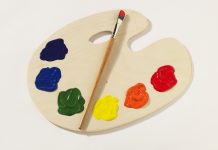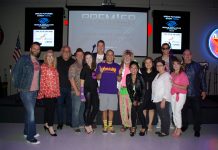Every time you wash the dishes, take a shower or do the laundry, you help to ensure that Anaheim has a reliable supply of drinking water.
Every time you wash the dishes, take a shower or do the laundry, you help to ensure that Anaheim has a reliable supply of drinking water. The Orange County Water District (OCWD; the District) and the Orange County Sanitation District (OCSD) treat about half of the total sewer flow to an extraordinary level using new technologies that produce 100 million gallons per day of supplemental indirect potable use (IPR) drinking water. In this article you will learn about the fascinating process your water goes through once it leaves your home.
The water you use flows by gravity through a series of sewer pipes to the OCSD treatment plant, where it goes through several processing steps. First, it flows through a bar screen system designed to catch large objects such as towels and lumber. The water then enters a grit chamber where sand and gravel are removed to protect mechanical systems from abrasion. The water is now ready for primary treatment. Here, heavy material is given time to sink to the bottom of large tanks and oils are given time to float to the top. Afterwards, both of these materials are removed with mechanical scrapers, skimmers and pumps.
Now, imagine blue food coloring in a glass of water, representing a dissolved organic (contaminant), much like that found in wastewater. The next process uses naturally occurring microscopic “good bacteria” (called bugs) that are placed in the water to “eat” the contaminants. These well-fed bugs rapidly reproduce, becoming a biomass. The biomass (now a soupy brown water) is continuously mixed and aerated with large blowers, and moved to secondary cleaners. The clear water leaving this process is now suitable for ocean discharge.
In most cities, this is the end of the story. In Orange County, this water enters OCWD’s high-tech Groundwater Replenishment System (GWRS) and three steps of additional purification. The first ,microfiltration, consists of hollow fiber straw-like membranes capable of filtering suspended particles and protozoa greater than 0.2 microns in size.
Salt is inevitably introduced to water used in the home and in industry and can only be removed by a demineralization process, such as Reverse Osmosis (RO), the second GWRS process step. RO pushes the water through a series of thin special-purpose plastic sheets (membranes) that filter water at the molecular level, leaving ultra-pure water as its end product.
The third GWRS step is an ultraviolet light and advanced oxidation process using hydrogen peroxide. The water is essentially clean before getting to this stage, but this final treatment process assures that any bacteria, virus, or low molecular weight organic chemicals that might have passed through RO are destroyed.
A small amount of lime is added to slightly “harden” the ultra-soft water and then into the pipelines it goes. The pipeline leads to either a series of injection wells along the coast to protect the groundwater basin from seawater contamination or into a 13-mile long pipeline leading to OCWD’s Anaheim recharge facilities. Here, water percolates deep underground where it resides for at least six months and possibly for thousands of years before being pumped back up to the surface for another trip through Orange County’s water cycle.
For the past 40 years, the OCWD and OCSD collaboration has been recognized globally as innovative, efficient and environmentally responsible. This model produces a sustainable new water supply that is a cost-effective alternative to imported water.
James Vanderbilt is the Mayor Pro Tempore of Anaheim and represents Division 9 of the Orange County Water District. For more information, visit www.ocwd.com. Contact Director Vanderbilt at jvanderbilt@anaheim.net.










